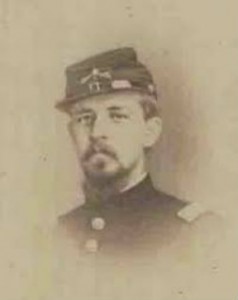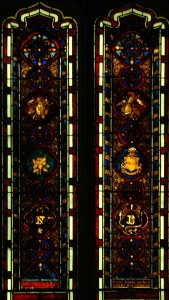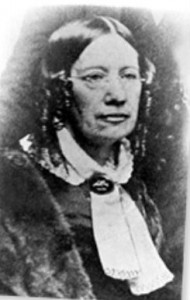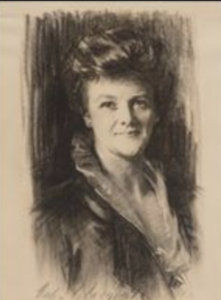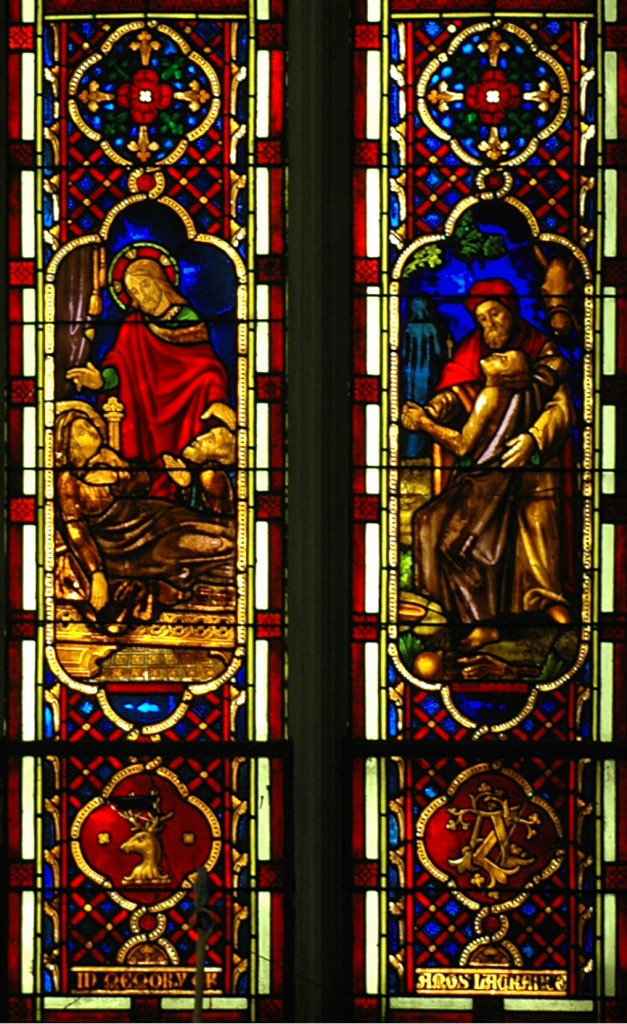The plan of forming a New Church originated with those residing on the Mill Dam [now Beacon Street], who have long felt the inconvenience of attendance on distant places of public worship. Many others in favor of extending the sphere and influence of our church sympathize in the movement. And a third class, who for various reasons wish to connect themselves with some new Society, favor the project. [1]
“Could abolition have been part of the various reasons?” asked our Parish Historian Mary Chitty. She knew that Harriet Beecher Stowe’s twins Hattie and Eliza and her sister Catharine Beecher had been confirmed at Emmanuel in 1862, and that William Richards Lawrence had funded in 1865 two lancets of our West window in memory of Lt. Nathaniel Bowditch, son of abolitionist Henry Ingersoll Bowditch. Aware that several Lawrences were also abolitionists, she began to research names of our early clergy and parishioners to see if she could discover any record of their attitudes to slavery and abolition. She learned that the best-known abolitionists were not Emmanuel parishioners, although a number of the latter were described as being “anti-slavery”. Knowing that slavery had been judicially abolished by 1783 in the Commonweath of Massachusetts, she wondered what anti-slavery had come to mean around the time of the church’s formation in 1860. She further investigated questions of war, secession, and pacifism, which seemed foremost in their minds of our parishioners and clergy.
Lieutenant Nathaniel Ingersoll Bowditch (1839- 1863)
Panels in the upper-middle of the window above our former organ loft were dedicated in memory of Lt. Nathaniel Bowditch, who fell at Kelly’s Ford, Virginia, on March 18, 1863.
He had been Assistant Adjutant to Colonel Duffie in the First Massachusetts Cavalry Brigade. The window was designed by his father Dr. Bowditch, who also privately printed a memorial leaflet, which was dedicated to his cousins Maj. Henry Pickering Bowditch and Capt. Charles Pickering Bowditch. [2]
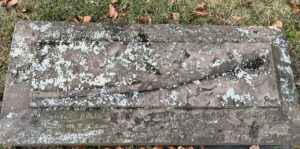
The saber & inscriptions on both sides of Lt. Bowditch’s gravestone are obscured by lichen. This side reads: “Wounded during a charge at Kelly’s Ford VA Mar 17…1863.”
The family plot (#1207) can be visited on Tulip Path in Mt. Auburn Cemetery, near the entrance of which is a prominent statue of the lieutenant’s namesake, mathematician and navigator Nathaniel Bowditch.
Henry Ingersoll Bowditch (1808-1892)
According to Wikipedia, Dr. Bowditch had attended the funeral of the great English abolitionist William Wilberforce in 1833. Upon his return to Boston, after witnessing the attempted lynching of William Lloyd Garrison, Bowditch declared himself an abolitionist.
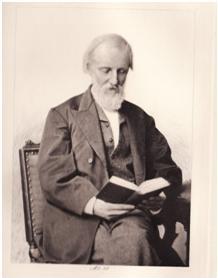
Dr. Henry Ingersoll Bowditch. Photo credit [4].
Dr. Bowditch devoted himself to the cause of fugitive slaves. In response to the plight of George Latimer, he helped found the Latimer Committee and edited the Latimer Journal. Their effort to petition to the Mass. General Court resulted in legislation forbidding jails from detaining fugitive slaves. As fugitive deportations continued, he organized the Boston Anti-Man-Hunting League, which trained its members to kidnap slave hunters, whom they planned to exchange for captured slaves. Although they never executed their plans, the organization served to unite anti-slavery efforts before the Civil War. For more detail on his abolitionist efforts, see Daniel Bever’s thesis. [5]
Henry’s wife Olivia Yardley Bowditch was confirmed at Emmanuel in 1862 with Catharine Beecher and her nieces, the daughters of her younger sister Harriet Beecher Stowe, author of Uncle Tom’s Cabin. Harriet promised that she would “sometimes join her” despite her father and husband’s commitment to Calvinism. [6] In 1864, she joined St. John’s Episcopal Church in Hartford, Connecticut. See the Harriet Beecher Stowe Center for images of her daughters and others.
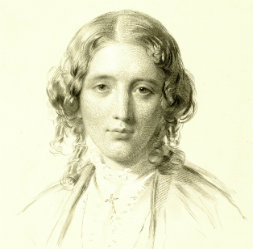
Harriet Beecher Stowe by Francis Holl, 1853
Lawrence Family
- William Richards Lawrence (1812-1885) purchased the land Emmanuel is built on, held its first meeting in March 1860 at his house at 98 Beacon Street, was a founding vestry member, and owned Pew 2 from 1862-1869. We don’t know much about him or his views on slavery and abolition, alas. He gave the two lower-right panels of our West Window [see image below] in honor of his father Amos Lawrence (1786-1852).
- His brother Amos Adams Lawrence (1814-1886) was a notable abolitionist. According to Wikipedia, in the Spring of 1854 he was radicalized by protests in Boston against the trial of fugitive slave Anthony Burns. “We went to bed one night old-fashioned, conservative, Compromise Union Whigs and waked up stark-mad Abolitionists,” he said. [7]
- William Lawrence, son of A.A. Lawrence, became 7th bishop of our diocese. In his autobiography he wrote: [8]
In politics my father was a conservative, a Whig, a strictly Union man who believed that the Union could be preserved and slavery gradually abolished by peaceful means. In 1856-58 Kansas was the center of the struggle. Would her people vote for slavery or freedom? The south poured in a horde of men; the New England Emigrant Aid Company recruited families and sent them to Kansas to settle and vote for a free State. My father, as treasurer, advanced and begged money for the cause and threw himself in to the fray with such vigor that later, when Kansas was organized, its capital was named “Lawrence”. Lawrence University, to which he gave the first endowment, was afterwards made the State University. He worked in order that in legal ways and by a majority vote Kansas should be free. He deplored the savage methods of the Abolitionist John Brown, and yet he could not help admiring the fanatic. I remember that as he sat down to dinner one day he said, “John Brown came into my office to-day and I told him to go to Whipple’s to have his daguerreotype taken; he may be famous some day.” Later he joined a few others in paying for counsel for John Brown, that he might have a fair trial.
- Their half-brother Robert Means Lawrence owned Pew 118 from 1872-1897.
- Vestry member Amory Appleton Lawrence owned Pew 104 in the gallery from 1872-1899.
- Sarah Lawrence Brooks (Mrs. Peter Chardon Brooks Jr.), sister of Bishop William Lawrence, had Pew 55 from 1869-1916.
- Their sister Harriet Dexter Lawrence Hemenway (1858-1960), whose husband Augustus served on our vestry, didn’t own a pew. According to Wikipedia, “[She] was not a stranger to controversy and came from a family of abolitionists. She once invited Booker T. Washington to stay in her home, when Boston hotels refused to give him a room”.
-
Marian Lawrence Peabody (1874-1969), daughter of Bishop William Lawrence, wrote in her memoir that her maternal-grandmother Sarah M. Cunningham was a parishioner of F.D. Huntington. [9] Marian frequently attended Emmanuel and married Harold Peabody here in 1906.
- Harriet A. Robeson, compiler. Emmanuel Church in the City of Boston (1860-1960): The First One Hundred Years (Boston: the Church Vestry, 1960), p. 8.
- Henry I. Bowditch, Memorial, 1865.
- Vincent Y. Bowditch, Life and Correspondence of Henry Ingersoll Bowditch (Boston: Houghton, Mifflin, 1902), p. 101.
- Ibid., 115.
- Daniel Bever, The Higher Court of Heaven”: Dr. Henry Ingersoll Bowditch and Violent Abolition (Williamsburg VA: William & Mary College, undergraduate honors thesis, 2011).
- Susan Swan, Emmanuel News, Feb. 1999.
- James M. McPherson, Battle Cry of Freedom: The Civil War Era (New York: Bantam Books, 1989), p. 120.
- William Lawrence. Memories of a Happy Life (Boston: Houghton Mifflin, 1926).
- Marian Lawrence Peabody. To Be Very Young Was Heaven (Boston, Houghton Mifflin, 1967). and her papers at the Mass. Historical Society.


